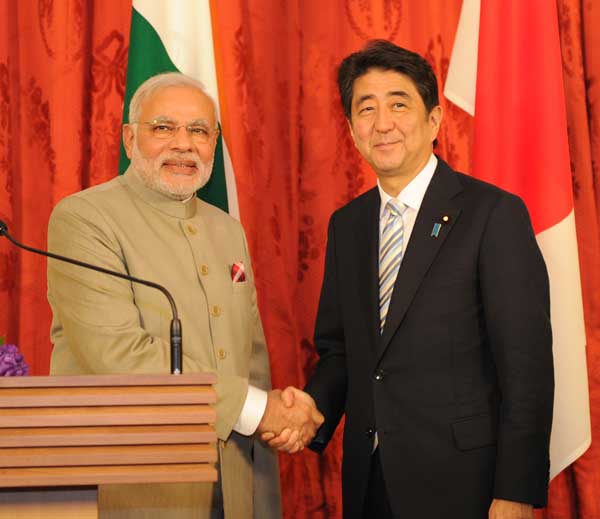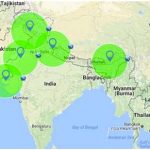IDR Blog
India-Japan Relations: Proximity to the Indo-Pacific Strategy

Indian Prime Minister Narendra Modi made his third visit to Japan on 28-29 October 2018 to attend 13th Annual Summit with Japanese Prime Minister Shinzo Abe. Both countries reiterated their commitment to the Special Strategic and Global Partnership and issued a vision statement that reviewed past achievements since the last meeting, and laid out a new plan for the future. An important developments was the agreement to upgrade their 2+2 dialogue involving the defence and foreign ministers of the two countries. Earlier, these dialogues were held at the junior ministerial levels. Japan also agreed to release the next installment of the Official Development Assistance (ODA) for the high-speed train project linking Mumbai and Ahmadabad. However, the most reported achievement was the raising of the existing bilateral currency swap agreement to US$ 75 billion from the previous US$ 50 billion to provide greater stability to the Indian Rupee.
India-Japan relations have been consistently good, except for the temporary period of Japanese disappointment with India’s 1998 nuclear tests. The historical and cultural connect between both countries provide the foundation for these good relations, along with Japan’s generous economic help to India under its ODA programme for decades. Modi and Abe’s strong personal chemistry. which adds further mutual trust between the two countries, is also well known. Overall, bilateral relations have been placed in a of win-win framework.
The goodwill demonstrated in bilateral exchanges is considered an important element of forging a common stand on the regional order by both India and Japan. However, many argue that it is in fact the other way round, on the basis of both countries needing each other to deal with regional and global issues, which has allowed an expansion of the bilateral relationship. Whatever be the case, the general perception is that similar to the bilateral, Japan and India are also similar in their approaches and orientation towards regional issues.
Why is this assertion significant? India and Japan both share common concerns in the rise of an ‘assertive’ China that wants to ‘revise’ Asia’s economic and security order. They also share a friendship with the US, which has been committed to maintaining the status quo by countering China. The US has been trying to do so bilaterally as well as through the partnerships with allies and friends in the region. The US push, support and encouragement for the Indo-Pacific, which was initially largely articulated by Japan and Australia, is symbolic of the US’ willingness to create a network of countries to deal with China’s ‘assertiveness’. The US would definitely like two of its close friends in Asia – Japan and India – to work along with an eager Australia to take lead in the Indo-Pacific strategy.
Clearly, the push-and-pull factors of regional politics bring India and Japan close to each other. However, there are nuanced divergences in the Indian and Japanese stands vis-à-vis the Indo-Pacific strategy. Japan apparently wants China excluded from the Indo-Pacific strategy and indirectly identifies China as a threat to a ‘free and open Indo-Pacific’. Thus, for Japan, the Indo-Pacific strategy is the first choice to deal with China. India has slightly different position. India still hopes that China can be persuaded to the ‘right’ track and to play by the rules of the game. It is for this reason that Modi sought a ‘reset’ of India-China relations after his informal summit with the Chinese President Xi Jinping in Wuhan in April 2018. Modi further discussed this new approach towards China in his speech at the Shangri La Dialogue in June 2018, where, while talking about the Indo-Pacific, he used the word ‘inclusiveness’ multiple times. He did not name China directly at any point, but it was clear that he was alluding to China and its inclusion in the Indo-Pacific. More recently, on 16 November, he said that a “great wall of trust and cooperation” must be build between India and China. To be sure, India does not appear to be against the Indo-Pacific strategy as a means to counter-balance China, but is reluctant to make this its first choice. India has still not moved to a fundamentally realist understanding of the region and believes that concessions must be made for constructive neutrality.
For the same reason, there have been murmurings in Japan, Australia and the US about India’s slow, insufficient and less vocal participation in the Indo-Pacific strategy, for which India has its own valid explanations. India-Japan relations must have the space to allow for India’s constructive reluctance, while also making progress on in-depth and wide-ranging cooperation on the bilateral front.
Courtesy: http://www.ipcs.org/comm_select.php?articleNo=5526




